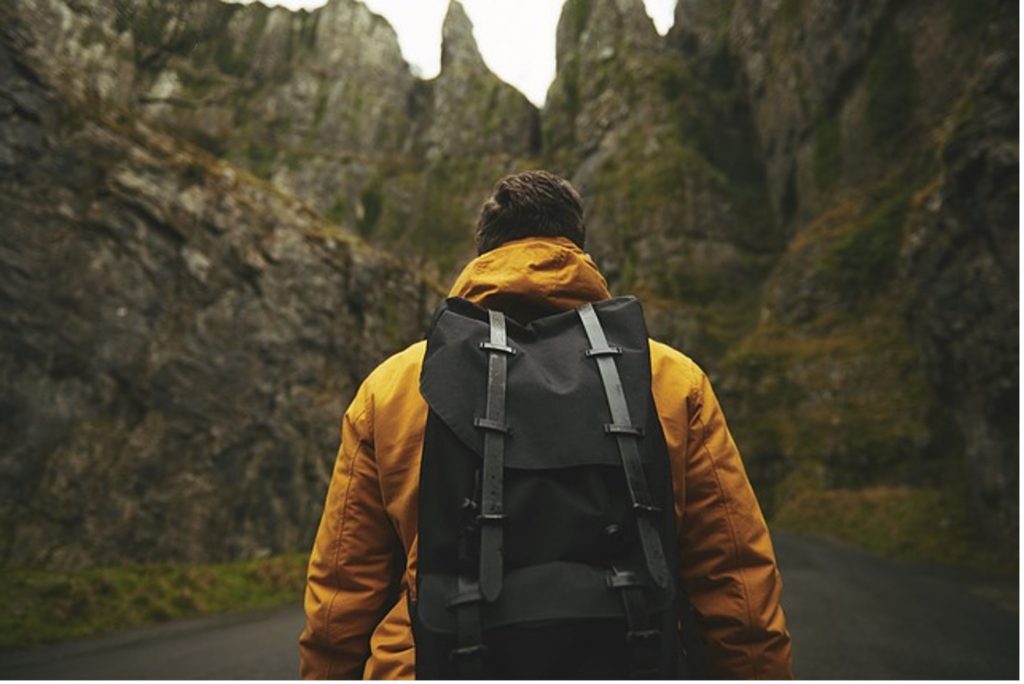Luke Caspian Jefferson leads group outdoor adventures at several destinations each year. He reports that backpacking, whether day hikes, or multiday backpacking trips, in the US is gaining popularity, so we asked for some tips for the novice looking to start out in this activity. Read on for advice from Luke Caspian Jefferson on what to take with you, and what to leave behind.
Minimalist backpacking is taking off and the number of people doing multi-day “through-hiking” trips is growing. There are several popular trails in the US including the Appalachian Trail, Pacific Crest Trail, and Continental Divide Trail that are drawing more traffic each year.
When it comes to this kind of hiking, gear selection is very important and it’s one of the areas that beginners struggle with most. Carrying too much weight increases the difficulty of the hike and increases the chances of injury and exhaustion. To save weight you need to carefully look at each item of equipment you take and consider how essential it is. According to Luke Caspian Jefferson, minimalist backpacking is designed to help you cut back on unnecessary weight as much as possible and enjoy your trip more. If you are preparing for a trail backpacking trip in the near future, here are some excellent tips for lightening the load.
Invest In Lightweight Gear
When you are buying gear for your trip, it’s worth spending a bit of money on lightweight options that are made with high-quality materials. You should focus on ‘the big three’ items in particular, your tent, your sleeping bag, and your backpack itself. If you can cut weight on these major items, your overall carry weight will be drastically reduced.
Be Realistic About What Is Necessary
One of the main stumbling blocks people have with backpacking is taking far too much unnecessary gear. This happens when people are unrealistic about what is and isn’t necessary. For example, if you’re already taking a stainless-steel mug, do you need a cup too? Do you really need a spare pair of pants for each day? Luke recommends that If you are serious about cutting your carry weight, be ruthless about what is and isn’t necessary.
Look For Multi-Use Items
There are some multi-use items you can take that will help with your backpacking tip such as a Swiss Army Knife. These kinds of items can be used for many different jobs, and they definitely count as lightweight gear, especially when you consider how many functions they perform. Simple items like a cooking pot can double as a bowl to eat from, so you don’t need to take both. Your sleeping bag sack can be a pillow if you stuff some clothes into it. Finding ways to double up the utility of certain items ensures that you still have everything you need without having to take so many items with you.
Calculate Your Water Needs Accurately
Water is the heaviest thing that you will carry with you. If you overestimate how much you need, you will end up carrying way more than you need to. So, calculate your water needs accurately before you leave. If you have a water filter, take it with you so you can collect water from natural sources along the way. Check where the water stops along the trail are too. Most popular trails have fairly regular stops to refill, so you don’t actually need to take that much water. However, don’t take too little water just so you can cut down on weight or you run the risk of dehydration.
Pick Lightweight Food Options
Food can be terribly heavy, so opt for lightweight options. Dried fruit instead of fresh, for example, is much easier to carry. You can also take lightweight dehydrated meals with you too. When you are deciding what food to take, consider the calorie content and nutritional value. Small items that are high in calories and protein are the best options for a long trail. If you take food items that can be eaten without cooking, you don’t need to make space for a stove either, so you can cut down on weight there too.
Organize Before Packing
Luke Caspian Jefferson says you’d be surprised just how much you can fit into a good backpacking pack. But you need to organize everything properly and pack it in a logical order. This will optimize the space you have and make it easier to keep things organized. Packing well means that you can use a smaller backpack and significantly reduce your carry weight. You should make a list of everything you need before you pack as well, so you don’t forget anything. If you put things in the pack in the right order, it also makes it easier to find things as and when you need them along the way.
Multiday trail backpacking is very strenuous and carrying extra weight makes it a lot harder on you, especially if you are new to hiking. Finding ways to reduce the amount of equipment that you take with you, and investing in lightweight gear, can make the trip so much more enjoyable, guaranteeing your newfound passion for hitting the trails isn’t a one-time affair!









